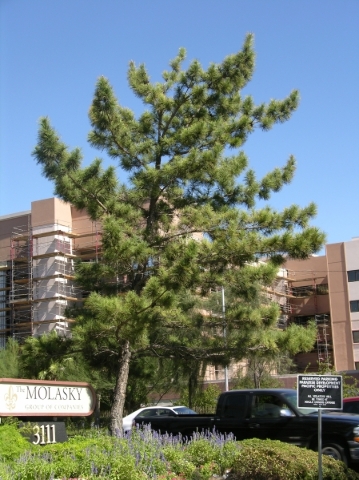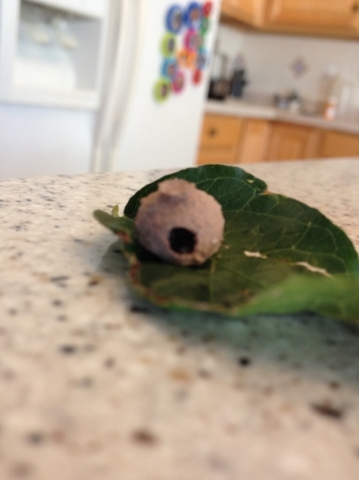Raised beds can be used in Southern Nevada for planting in fall, winter
Q: I know it might be a little too late in the season, but I am open for ideas to continue our gardening on a raised bed. This summer we had a great time growing kale, red and green chard, jalapeno peppers and basil.
A: I will give you my version of raised beds, the kind we built at the University Orchard for growing vegetable crops. I wrote some instructions for building these types of raised beds and put it on my blog so it can be downloaded.
If any of the readers need this information, contact me by email and I will forward it to them. The first part tells you what to plant in the fall and winter months and whether you can start these plants from seed or you must put them in the soil as transplants.
The second part tells you how to construct raised beds without building sidewalls but using only the natural slope of the soil to retain their raised bed shape. If you do not need to construct sidewalls, this will save you a lot of money. However, some people like to build sidewalls from wood, brick or cement block to surround these raised beds.
Once you have constructed raised beds you should not be walking in them unless you are preparing the soil or perhaps harvesting. Walking on these beds transfers weed seeds, diseases and compacts the soil, making the soil more difficult to grow vegetables.
Raised beds should be wide enough so that you can access the entire bed by using either side. Walkways are 18 to 24 inches wide between them, and this is where traffic should be kept.
I have found that irrigating with a hose by hand is usually not very effective during the heat of the summer. It can work in the cooler times of the season, but people do not water deep enough during the heat of the summer.
Remember to add 1 inch of compost to these raised beds every year you are growing crops. If you are taking something from raised beds by harvesting, you must put something back into the raised beds to rebuild the soil.
Q: I love Veithcii Gardenia and I noticed that a local nursery has them for $10 for a 5-gallon plant. How do you keep the plant alive in the winter in Las Vegas and should it remain in a container and not in the ground? I have seen two of these plants in containers in Sun City Summerlin under a tree blooming profusely in the summer.
A: "Veithcii" is a popular selection or variety that has a longer bloom period than some others. Gardenias are grown by a number of home gardeners in our desert but you are right, they don't belong here so we have to put them in the right location and amend the heck out of that soil if we want them to do well.
It is best if they are grown in containers rather than growing them in garden soil. A good spot would be in filtered light which is what you would get growing them under some trees for protection from intense sunlight. Locate them in a warm microclimate in the landscape and move them into the garage if it gets excessively cold.
Gardenias, in general, perform best in a bright northerly or easterly exposure. The soil should be 50 percent compost or at least high in organic matter. You can grow them in the ground, but they will be more difficult to manage because the soil will slowly revert back to desert soil unless you continually add compost to the soil surface.
It is also important to put a 2- or 3-inch layer of wood chips. I would use two drip emitters and never let the soil get overly dry. Fertilize three to four times a year and add a good iron chelate to the early spring application of fertilizer.
The important things to remember are having a good soil, proper exposure to light and frequent irrigation. The container should allow for drainage of water and you should see a small amount of water exit the container every time you irrigate.
Q: I sent pictures of a round object about the size of a large marble with an entry hole in it. I found it attached to the leaf of a cat's claw leaf in my backyard in Summerlin. I found only one so I am not worried about lots of pests from this one vessel.
A: This hard, mud-like ball with a hole in it, attached to a leaf, was left behind by a mason wasp. The mason wasp is sometimes called a potter wasp because of these round mud balls resemble pottery. It is theorized Native Americans based some pottery designs from the mud balls left behind by potter wasps.
Wasps are generally divided into two categories: wasps that live in communities and called "social" wasps, and those living by themselves termed "solitary" wasps.
Potter wasps are considered solitary; they live alone and build this mud nest for a single, solitary offspring. After building this potterylike nest, the female finds a small grub, paralyzes it by stinging and places it in this nest along with her egg. The developing youngster uses it for food.
Potter wasps are not aggressive toward humans or other large animals unless they are provoked. Wasps can sting multiple times without dying, unlike a bee. They are considered beneficial insects in the garden. Just give the adult wasp its own space.
Q: Are black pine, California Christmas tree and thunbergii all the same plant? I have two trees that are important in my landscape and have been doing well for several years. They were neglected recently so there is no place for deep watering and were not fertilized in 2015. There is sap coming from the trunk. Should I try to rehabilitate them or replace them?
A: Japanese black pine is Pinus thunbergii, so thunbergii probably refers to Japanese black pine. I do not know if it is called California Christmas tree, but I doubt it because Japanese black pine has a very unusual form, making it a specimen plant in the landscape. It does not have the Christmas tree shape.
Most of the textbooks say Japanese black pine tolerates alkaline soils, but I have not really found them to be very tolerant of the hot desert and our soils. Many of them have been planted in Las Vegas, but very few are still around, which tells me many were removed.
If you have Japanese black pine, it is characteristically slow in growth and has a very distinguished form that adds character to a landscape. If you are looking for a Christmas tree pine, this is not going to be it.
They are slow-growing. If they have been neglected and do not look good, they will rehabilitate very slowly.
Soil applied systemic insecticides that control borers would be a good if the trees actually have them. Pines can be "sappy," so make sure it is borers before you make the application. Wounding of the trunk and limbs can also cause them to bleed sap like borer damage.
If you choose to rehabilitate them, put tree wells around the trunk about 2 feet in diameter to hold irrigation water. Give them a deep soaking with a hose once a month along with their normal irrigations.
Fertilize them with 16–16–16 once a year in the early spring or apply it now if they haven't been fertilized this year. Punch some holes in the soil 2 to 4 feet from the trunk to a depth of 8 to 10 inches. Put a handful of fertilizer in each of the holes and water them twice to activate the fertilizer and move it into the tree.
Expect a very slow recovery if you choose to rehabilitate them. If they look bad now, I would suggest that you consider replacing them with something that you really like and can get instant gratification.
— Bob Morris is a horticulture expert living in Las Vegas and professor emeritus for the University of Nevada. Visit his blog at xtremehorticulture.blogspot.com. Send questions to Extremehort@aol.com.


















